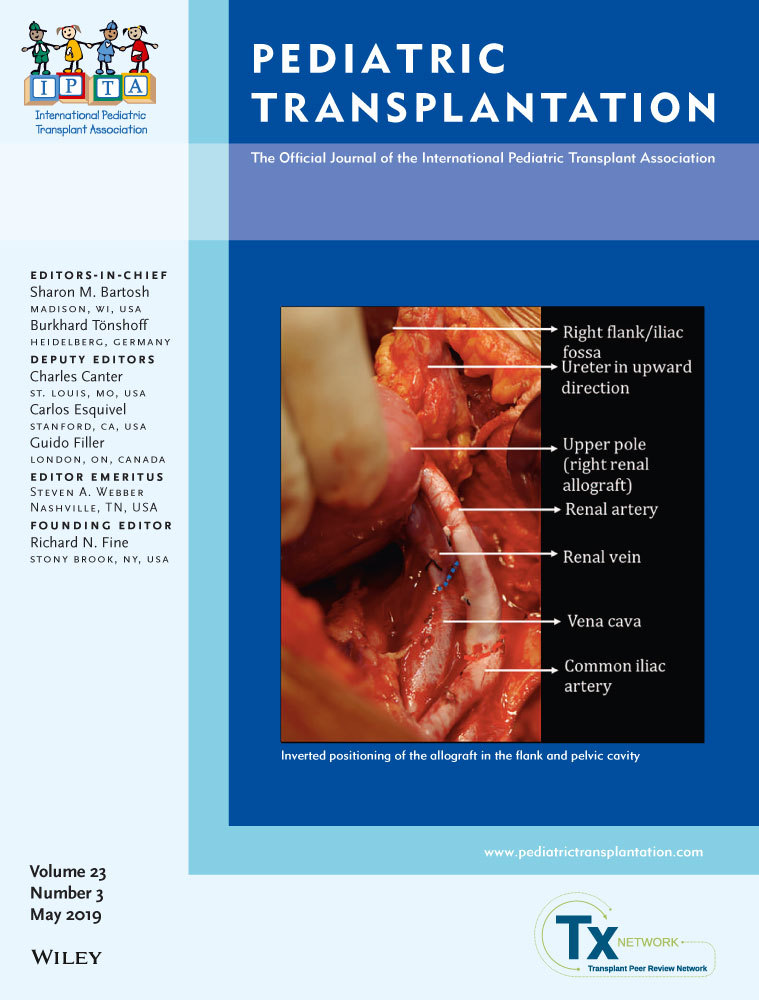Intra-patient variability in tacrolimus exposure in pediatric liver transplant recipients: Evolution, risk factors, and impact on patient outcomes
Abstract
Background
This study aims to investigate the evolution and factors associated with TAC IPV and its impact on patient outcomes in pediatric LT recipients.
Methods
This is a retrospective study including 41 children. The TAC IPV was expressed as the coefficient of variation and was calculated for years 1-5 following LT. The number of missed clinic appointments was used as a surrogate marker for therapy adherence.
Results
We identified a decrease in the TAC IPV during the first 3 years after LT (P < 0.01). Serum albumin in the first year (P = 0.03), hematocrit (P = 0.02) and total bilirubin (P = 0.04) in the third year, and therapy adherence (P < 0.01) in the fifth year were associated with TAC IPV. High TAC IPV was associated with biopsy-proven acute allograft rejection (P = 0.04) and the need for biopsy during the first year (P = 0.02). There was a borderline association between TAC IPV and donor-specific antibodies (P = 0.08) and CMV viremia (P = 0.07). High TAC IPV was a predictor of need for liver biopsy and AR with an odds ratio of 1.04 (95% CI 1.0-1.1; P = 0.03) and 1.04 (95% CI 1.0-1.1; P = 0.05), respectively.
Conclusions
Our results highlight the impact of biological factors on TAC IPV during the early LT follow-up and later also therapy adherence. High TAC IPV may be associated with adverse patient outcomes.
CONFLICTS OF INTEREST
The authors declare no conflicts of interest.




